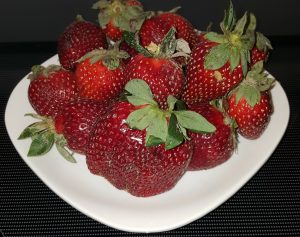WInter gardening?
If you’re a green-fingered garden lover, then winter can be a hard time for you. But you don’t just have to gaze longingly at your seeds and pictures of blooming plants online. This is because there are a few hardy fruits and vegetables that you can sow in greenhouses throughout the colder months. Growth can be slow for some, and others may be ready to harvest in spring, but these seven plants will keep you busy when there’s frost on the ground.
7 Ideas for Winter Gardening (in a greenhouse in cold growing zones)
Don’t let the cold temperatures hold you back from gardening!
1. Winter salads
Salads aren’t just perfect for summer. There are plenty of ‘cut and come again’ varieties of lettuce and salad leaves that you can grow and harvest throughout the winter months. Try land cress, mustard greens, and lambs lettuce – some of these will add a warm wintery spice to your food. For something with a little crispy bite to it, try the ‘Winter Gem’ variety of lettuce.
 2. Early-pull carrots
2. Early-pull carrots
For an early crop of carrots plant seeds in a 12-inch pot – the best varieties are ‘Early Nantes’, ‘Amsterdam Forcing’ and ‘Adelaide’. The latter type, in particular, is something you can sow in a greenhouse as early in the year as November. So by spring, there should be some young and tender roots ready for pulling and eating.
You can enjoy them fresh or dehydrate your carrots for off-season consumption.
3. Pak Choi
For the best results with this delicious Asian vegetable, sow the seeds in late summer and transplant them into your greenhouse in autumn ready for them to grow over winter. You can either harvest the individual leaves throughout the winter to add to a salad, or you can wait for the heads to mature and add the whole plant to your stir-fries. Not only is it quick to mature, it’s also full of vitamins A and C, iron, calcium and folic acid.
4. Herbs
Many varieties of herbs simply won’t emerge over winter. Basil and chives are two examples because they just hate the cold, but there are a few kinds that can keep going throughout the colder months. The only thing to note is that herbs can be fussy, so your greenhouse should be heated with an electric heater or propagator to keep them as happy as possible.
Rosemary, mint, sage, and thyme are the ones that are most likely to survive the winter. Well-established plants are more likely to grow as opposed to seedlings. But some herbs will hunker down over winter and then pick up quicker and earlier in the spring.
5. Strawberries
While your strawberry plants may be growing all year round, it’s important to bring them into a greenhouse. This is because the temperatures start to drop if you plant them in a pot. Strawberries tend to flower and fruit after they have been frosted. Be sure to give them a little TLC while you’re at it; remove any dead leaves and repot the whole plant into fresh compost that is peat-free. Remember that during the winter you will be their pollinator, so use a small brush to dust pollen between the flowers. By May you will be reaping the rewards of your efforts.

6. Broad beans
A classic, and delicious vegetable that you can sow later in the year, ready to be harvested in a few month’s time. Plant in beds near the doors of your greenhouse – so bees can easily find them and pollinate. Sow seeds individually in a three-inch pot.
7. Mangetout peas
The ‘Oregon Sugar Pod’ variety of mangetout peas is sturdier and can stand the lower temperatures much more than others. To harvest in spring, plant approximately four seeds in a four-inch pot and leave to grow. When they reach around six inches tall move them to a 12-inch pot and support with twiggy sticks that are around 4 feet long.




